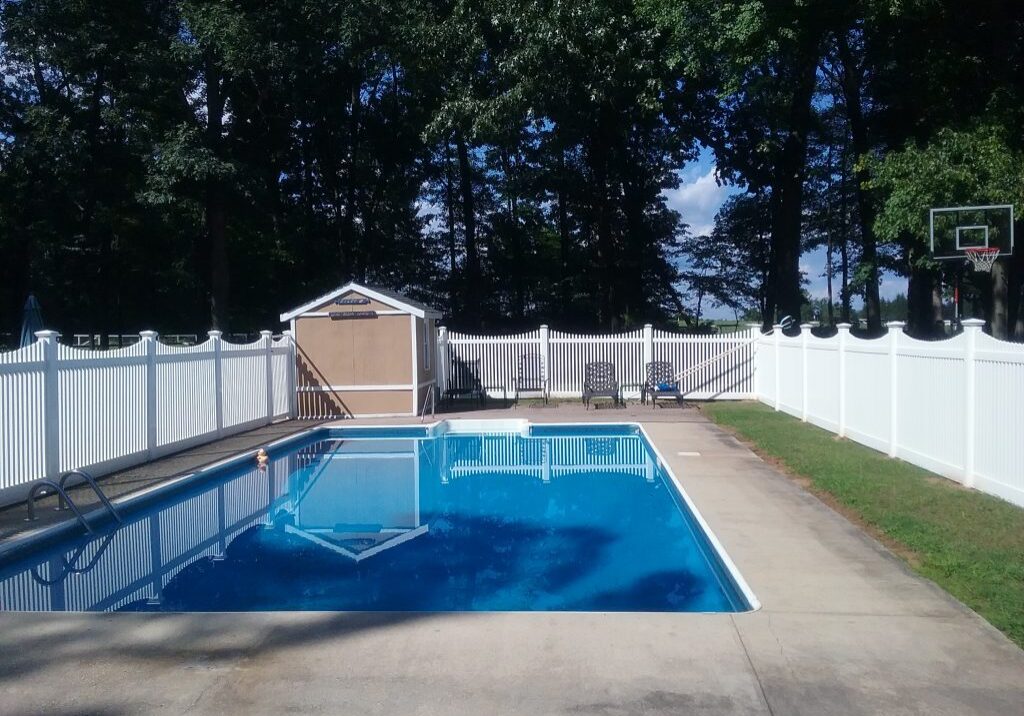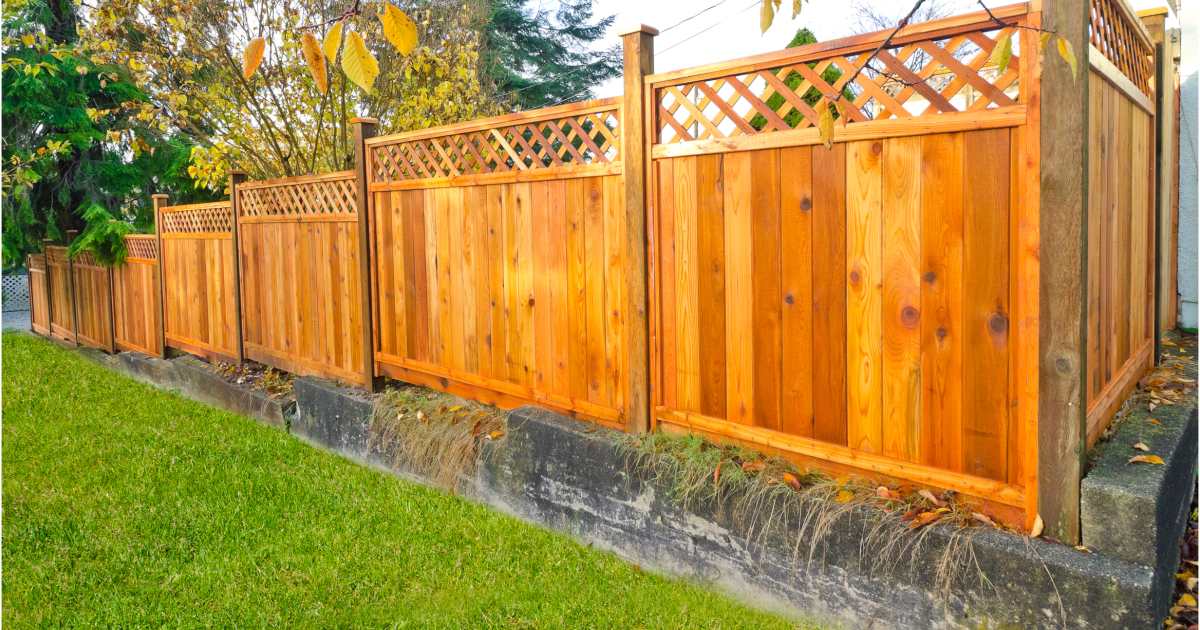Featured
Preserving your fence is important to guarantee its long life, look, and functionality. Different products have special upkeep needs, influenced by variables such as environment, direct exposure to components, and planned use. Whether your fence is constructed from timber, plastic, steel, or other materials, recognizing its treatment requirements will certainly help keep it in optimum problem. Below's an introduction of exactly how to maintain different types of fencing materials properly.
![]()
Cleansing: Utilize a pressure washer or soapy water with a soft brush to get rid of mold, dust, and algae. This need to be done yearly or biannually. Tarnishing and Sealing: Use a sealant or tarnish every 2-- 3 years to avoid wetness damages and UV fading. Pick a top notch product appropriate for outside usage. Repairs: Change distorted, decayed, or fractured boards immediately to prevent further damages. Parasite Management: Treat with a timber preservative to safeguard versus termites and other pests. 2. Plastic Fencings. Vinyl fences are prominent for their low-maintenance nature but still need some maintenance.
Cleaning: Laundry the fencing with a blend of water and mild cleaning agent utilizing a soft sponge or fabric. Stay clear of rough cleaners that may scratch the surface area. Examinations: Check for gaps or splits occasionally, specifically after tornados. Plastic can become weak in extremely cool weather. Avoiding Discoloration: Eliminate spots immediately. For tough stains, use a vinegar solution or a vinyl-safe cleaning representative. 3. Chain-Link Fences. Chain-link fencings are practical and sturdy, typically utilized for safety and security and limit noting.
Rust Removal: Evaluate for corrosion consistently, especially in humid or seaside areas. Remove rust with a cable brush and use a rust-proof finish. Cleansing: Wash with water to eliminate dirt and debris. Utilize a scrub brush for areas with hefty buildup. Tightening and Fixes: Make certain the articles and links stay limited. Replace harmed areas or hardware as required. 4. Wrought Iron Fences. Wrought iron supplies an elegant look but requires constant interest to stop rust and preserve its finish.
Corrosion Avoidance: Sand off any corrosion places and apply a rust-resistant primer and paint. This ought to be done every year or as required. Cleaning: Use a light soap option and a soft towel or sponge to remove dust. Avoid extreme chemicals that can damage the steel. Paint: Reapply paint every couple of years to protect the iron and enhance its look. 5. Aluminum Fences. Light weight aluminum fences are light-weight, corrosion-resistant, and need very little treatment.
![]()
Cleansing: Usage soapy water and a cloth to cleanse the fence, washing extensively to stay clear of touches. Assessments: Look for loosened screws or panels periodically. Protect or change parts if required. Touch-Ups: Use paint created for aluminum to cover any kind of chips or scrapes, protecting the metal below. 6. Composite Fences. Composite secure fencing is made from recycled materials, incorporating the appearance of wood with higher toughness.
Cleaning: Rinse with water and utilize a moderate detergent to eliminate dust and discolorations. Avoid rough tools that could harm the composite surface area. Assessments: Try to find signs of bending or cracking, particularly in locations with severe temperature adjustments. Build Prevention: Tidy mold or mildew promptly with a blend of water and white vinegar. 7. Bamboo Fences. Bamboo fence is environment-friendly but extra delicate than other products.
Cleaning: Use a soft brush with soapy water to clean dust and particles. Prevent using too much water stress to avoid splitting. Sealing: Use a waterproof sealer every 2-- 3 years to safeguard against weather condition damage. Repair services: Change cracked or damaged bamboo poles as required to keep the framework and appearance. General Upkeep Tips. Trim Greenery: Maintain bushes and vines far from the fence to protect against moisture build-up and damages. Seasonal Treatment: In wintertime, clear snow buildup from fencings to avoid anxiety on the structure. In summertime, check for sun damage or fading. Routine Evaluations: Walk along the fencing line occasionally to check for loosened equipment, leaning sections, or various other indicators of wear. Verdict. No matter the kind of fence material, normal upkeep is the vital to maintaining its function and looks. Wooden fences require the most upkeep, while vinyl and aluminum need less effort however still gain from periodic cleaning and evaluations. By attending to small issues early and doing routine treatment, you'll appreciate a fence that remains tough and appealing for years to find.

- Wood Fencings. Wooden fences are timeless yet call for normal care to secure versus weather condition and bugs.
Cleansing: Utilize a pressure washer or soapy water with a soft brush to get rid of mold, dust, and algae. This need to be done yearly or biannually. Tarnishing and Sealing: Use a sealant or tarnish every 2-- 3 years to avoid wetness damages and UV fading. Pick a top notch product appropriate for outside usage. Repairs: Change distorted, decayed, or fractured boards immediately to prevent further damages. Parasite Management: Treat with a timber preservative to safeguard versus termites and other pests. 2. Plastic Fencings. Vinyl fences are prominent for their low-maintenance nature but still need some maintenance.
Cleaning: Laundry the fencing with a blend of water and mild cleaning agent utilizing a soft sponge or fabric. Stay clear of rough cleaners that may scratch the surface area. Examinations: Check for gaps or splits occasionally, specifically after tornados. Plastic can become weak in extremely cool weather. Avoiding Discoloration: Eliminate spots immediately. For tough stains, use a vinegar solution or a vinyl-safe cleaning representative. 3. Chain-Link Fences. Chain-link fencings are practical and sturdy, typically utilized for safety and security and limit noting.
Rust Removal: Evaluate for corrosion consistently, especially in humid or seaside areas. Remove rust with a cable brush and use a rust-proof finish. Cleansing: Wash with water to eliminate dirt and debris. Utilize a scrub brush for areas with hefty buildup. Tightening and Fixes: Make certain the articles and links stay limited. Replace harmed areas or hardware as required. 4. Wrought Iron Fences. Wrought iron supplies an elegant look but requires constant interest to stop rust and preserve its finish.
Corrosion Avoidance: Sand off any corrosion places and apply a rust-resistant primer and paint. This ought to be done every year or as required. Cleaning: Use a light soap option and a soft towel or sponge to remove dust. Avoid extreme chemicals that can damage the steel. Paint: Reapply paint every couple of years to protect the iron and enhance its look. 5. Aluminum Fences. Light weight aluminum fences are light-weight, corrosion-resistant, and need very little treatment.

Cleansing: Usage soapy water and a cloth to cleanse the fence, washing extensively to stay clear of touches. Assessments: Look for loosened screws or panels periodically. Protect or change parts if required. Touch-Ups: Use paint created for aluminum to cover any kind of chips or scrapes, protecting the metal below. 6. Composite Fences. Composite secure fencing is made from recycled materials, incorporating the appearance of wood with higher toughness.
Cleaning: Rinse with water and utilize a moderate detergent to eliminate dust and discolorations. Avoid rough tools that could harm the composite surface area. Assessments: Try to find signs of bending or cracking, particularly in locations with severe temperature adjustments. Build Prevention: Tidy mold or mildew promptly with a blend of water and white vinegar. 7. Bamboo Fences. Bamboo fence is environment-friendly but extra delicate than other products.
Cleaning: Use a soft brush with soapy water to clean dust and particles. Prevent using too much water stress to avoid splitting. Sealing: Use a waterproof sealer every 2-- 3 years to safeguard against weather condition damage. Repair services: Change cracked or damaged bamboo poles as required to keep the framework and appearance. General Upkeep Tips. Trim Greenery: Maintain bushes and vines far from the fence to protect against moisture build-up and damages. Seasonal Treatment: In wintertime, clear snow buildup from fencings to avoid anxiety on the structure. In summertime, check for sun damage or fading. Routine Evaluations: Walk along the fencing line occasionally to check for loosened equipment, leaning sections, or various other indicators of wear. Verdict. No matter the kind of fence material, normal upkeep is the vital to maintaining its function and looks. Wooden fences require the most upkeep, while vinyl and aluminum need less effort however still gain from periodic cleaning and evaluations. By attending to small issues early and doing routine treatment, you'll appreciate a fence that remains tough and appealing for years to find.
Latest Posts
Find Out Save Big on Car Maintenance with Montclare Auto Repair’s Special Deals
Published May 27, 25
1 min read
Explore WyHy Federal Credit Union – Essential Perks for Your Financial Success
Published May 27, 25
1 min read
Discover WyHy FCU – Key Advantages for Your Future
Published May 24, 25
1 min read